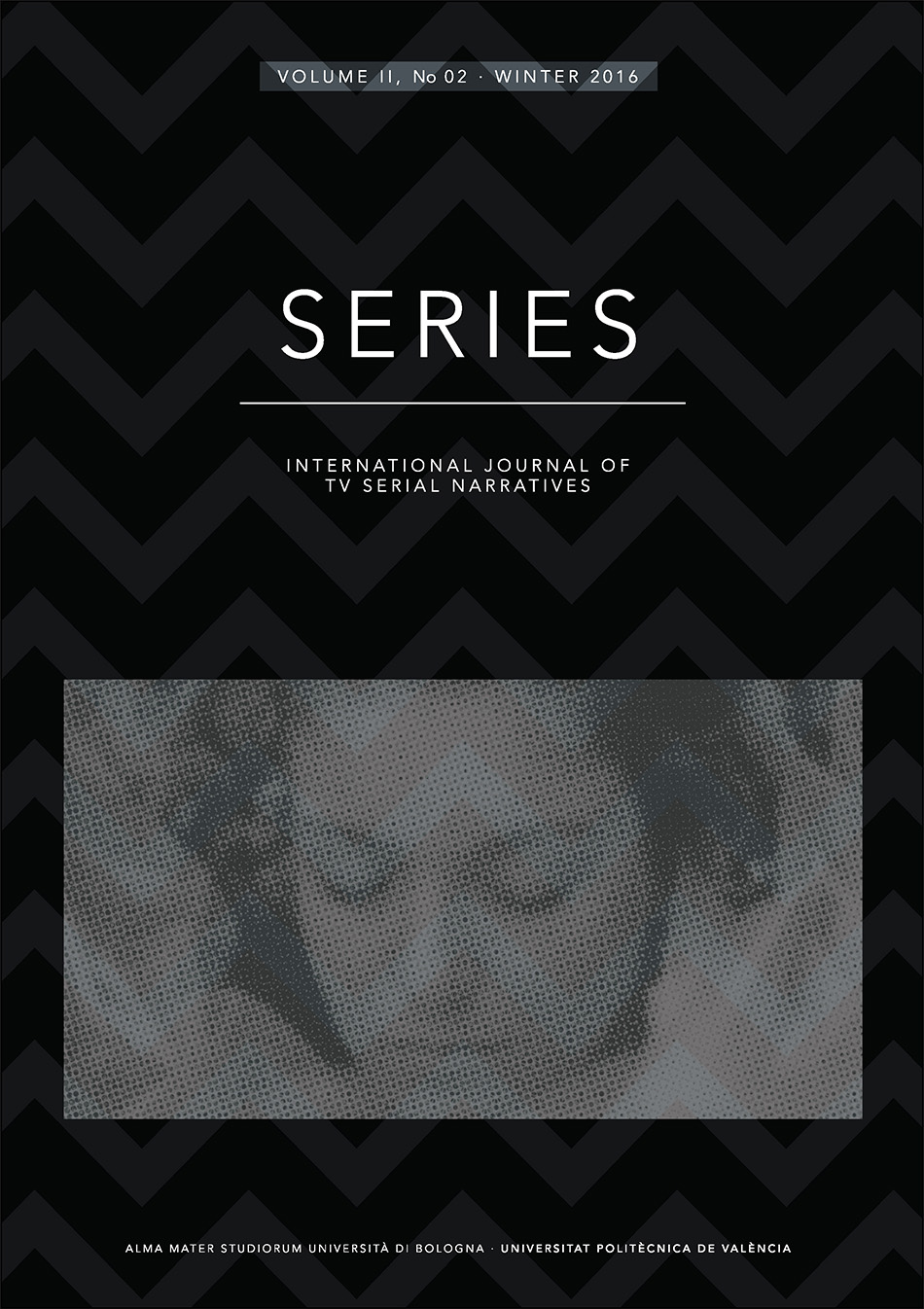Dimensional expansions and shiftings: fan fiction and transmedia storytelling the the Fringeverse
DOI:
https://doi.org/10.6092/issn.2421-454X/6593Parole chiave:
transmedia storytelling, fan fiction, user-generated content, narrative strategies, FringeAbstract
This article explores the characteristics of user-generated texts in fictional transmedia storytelling based on the fan fiction originating from FOX’s television series Fringe (2008-2013). A fan fiction (also known as fanfic or fic) is a piece of writing in which the author recreates the setting, events and characters of a source text or canon. After reviewing fan theories and practices, the article focuses on three examples examples of Fringe fan fiction analysing them with a double-edged methodology that combines narrative semiotics and narratology. Based on the results we update a set of transmedia narrative strategies by adding dimensional expansion and shifting, and also redefine the different areas of the storyworld where fan fiction is set with special emphasis on alternate universe (AU) scenarios.Riferimenti bibliografici
Bacon-Smith, Camille (1992). Enterprising women: Television fandom and the creation of popular myth. Philadelphia, PA: University of Pennsylvania Press.
Belsunces Gonçalves, Andreu (2011). Producción, consume y prácticas culturales en torno a los nuevos media en la cultura de convergencia: el caso de Fringe como narración transmedia y lúdica. Barcelona: Universitat Oberta de Catalunya MA thesis.
Belsunces Gonçalves, Andreu (2013). ‘Los misterios piden participación. Fringe como punto de partida y encuentro para la transmedialidad, el juego y la participación de los fans’, pp. 337–365 in A. Roig, D. Aranda, and J. Sánchez-Navarro (eds.) Fanáticos. La cultura de los fans. Barcelona: UOC Press.
Busse, Kristina and Hellekson, Karen (2006). ‘Introduction’, pp. 5–32 in K. Hellekson, and K. Busse (eds.) Fan Fiction and Fan Communities in the Age of the Internet: new essays. Jefferson, NC: McFarland.
Chatman, Seymour (1978). Story and Discourse: Narrative structure in Fiction and Film. Ithaca, NY: Cornell University Press.
Cochran, Tanya R., Sherry Ginn and Paul Zinder (eds.) (2013). The Multiple Worlds of Fringe: Essays on the J.J. Abrams Science Fiction Series. Jefferson, NC: McFarland.
Coppa, Francesca (2006). ‘A Brief History of Media Fandom’, pp. 41–59 in K. Hellekson and K. Busse (eds.) Fan Fiction and Fan Communities in the Age of the Internet: new essays. Jefferson, NC: McFarland.
Clarke Stuart, Sarah (2011). Into the looking glass: Exploring the worlds of Fringe. Toronto: ECW Press.
Eco, Umberto (1979). The role of the reader. Explorations in the semiotics of texts. Bloomington, IN: Indiana University Press.
Fiske, John (1992). The cultural economy of fandom, pp. 30–49 in L. A. Lewis (ed.) The adoring audience. New York, NY: Routledge.
Fernández Bueno, Marta (2002). El pasado literario en la obra de Christoph Hein. Madrid: Universidad Complutense de Madrid PhD thesis
Garín, Manuel (2013). ‘Truth takes time: the interplay between heroines, genres and narratives in three J.J. Abrams’ television series’. Communication & Society / Comunicación y Sociedad 26(2): 47–64.
Genette, Gérard (1997). Palimpsests: Literature in the Second Degree. Lincoln, NE: University of Nebraska Press.
Grazier, Kevin R. (2011). Fringe Science: Parallel Universes, White Tulips and Mad Scientists. Dallas, TX: Benbella Books.
Greimas, Algirdas J. and Joseph Courtés (1982). Semiotics and language: an analytic dictionary. Bloomington (IN): Indiana University Press.
Guerrero, Mar (2012). ‘La red enmarañada: narrativa transmedia en ficción femenina. El caso de Infidels y Mistresses’. Signo y Pensamiento 61(31): 74–90.
Guerrero, Mar (2014). ‘Webs televisivas y sus usuarios: un lugar para la narrativa transmedia. Los casos de Águila Roja y Juego de Tronos en España’. Comunicación y Sociedad 21: 239–267.
Hernández, Manuel and María del Mar Grandío, (2011). ‘Narrativa crossmedia en el discurso de ciencia ficción. Estudio de Battlestar Galactica (2003-2010)’. Área Abierta 28: 1–20.
Hills, Matt (2002). Fan cultures. London: Routledge.
Jenkins, Henry (1992). Textual poachers: Television fans and participatory culture. London: Routledge.
Jenkins, Henry (2003). Transmedia storytelling. Moving characters from books to films to video games can make them stronger and more compelling. Technology Review. (http://www.technologyreview.com/biomedicine/13052/) (13-01-2003).
Jenkins, Henry (2006). Convergence culture: Where old and new media collide. New York, NY: New York University Press.
Jenkins, Henry (2009). The revenge of the origami unicorn: Seven principles of transmedia storytelling. Confessions of an Aca-Fan: The Official Weblog of Henry
Jenkins (http://henryjenkins.org/2009/12/the_revenge_of_the_origami_uni.html
and http://henryjenkins.org/2009/12/revenge_of_the_origami_unicorn.html) (12-12-2009).
Jenkins, Henry, Sam Ford and Joshua Green(2013). Spreadable Media: Creating Value and Meaning in a Networked Culture. New York and London: New York University Press.
Leavenworth, Maria Lindgren (2011). ‘Transmedial Texts and Serialized Narratives’, in Cyber Echoes (ed.) ʻTextual Echoesʼ, special issue of Transformative Works and Cultures 8(2). (DOI: http://dx.doi.org/10.3983/twc.2011.0361)
Mittell, Jason (2012–2013). Complex TV: The poetics of contemporary television storytelling, pre-publication edition. MediaCommon Press http://mcpress.media-commons.org/complextelevision/ (24-03-2012)
Osservatorio sulla fiction smart_serials (2010). ‘Forme della serialità: Una guida semiotica all’analisi della fiction’, pp. 201-223 in M.P. Pozzato and G. Grignaffini (eds.) Mondo Seriali. Percorsi semiotici nella fiction. Bologna, Italy: RTI.
Perryman, Neil (2008). ‘Doctor Who and the convergence of media. A case study in transmedia storytelling’. Convergence: The International Journal of Research into New Media Techonologies 14(1): 21–39. (DOI: http://dx.doi.org/10.1177/1354856507084417)
Russo, Julie Levin and Francesca Coppa (2012). ‘Fan/Remix Video (A Remix)’, in F. Coppa and J. Levin Russo (eds.) ʻFan/Remix Videoʼ, special issue of Transformative Works and Cultures 9 (DOI: http://dx.doi.org/10.3983/twc.2012.0431)
Ryan, Marie-Laure. (2008). ‘Transfictionality Across Media’, pp. 385-418 in J.Pier and, J.A. García Landa (eds.) Theorizing Narrativity. Berlin: Walter De Gruyter.
Sandvoss, Cornel (2005). Fans: The mirror of consumption. Cambridge: Polity Press.
Scolari, Carlos A (2009). ʻTransmedia Storytelling: Implicit Consumers, Narrative Worlds, and Branding in Contemporary Media Productionʼ. International Journal of Communication 3: 586–606.
Scolari, Carlos A., Manel Jiménez and Mar Guerrero (2012). Narrativas transmediáticas en España: cuatro ficciones en busca de un destino cross-media. Communication & Society/Comunicación y Sociedad 25(1): 137-164.
Scolari, Carlos A (2013a). Lostology: Transmedia storytelling and expansion/compression strategies. Semiotica 193: 45–68. (DOI: http://www.dx.doi.org/10.1515/sem-2013-0038)
Scolari, Carlos A. 2013b. Narrativas transmedia: Cuando todos los medios cuentan. Barcelona: Deusto.
TV Shows
(2001-2010)
Battlestar Galactica (2004-2009)
Fringe (2008-2013)
Lost (2004-2010)
Sherlock (2010-)
Downloads
Pubblicato
Come citare
Fascicolo
Sezione
Licenza
Copyright (c) 2016 Mar Guerrero-Pico
La rivista è rilasciata sotto una licenza Creative Commons Attribuzione 4.0 Internazionale (licenza completa).
Vedere anche la nostra Open Access Policy.





